In this article, Dhruv Suri, Jai Shekhar, and Azade Y Aria discuss India's trajectory towards planned renewable energy targets and describe the implications of myopic thinking on future progress. They also stress on the fact that merely increasing renewable energy targets and installing new capacity is simply not enough. Economically maintaining a balance of supply and demand and designing technically reliable grids while adopting an overarching systems-level approach are the need of the hour.
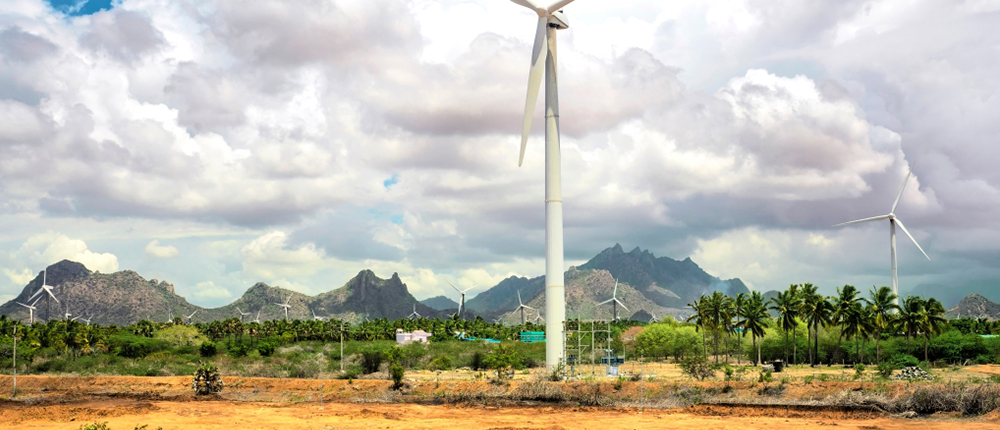
The global energy system is facing a stiff paradigm shift. Energy-consuming countries face the two-pronged paradox of providing communities access to affordable and reliable electricity while also bearing the ramifications of increasing energy demand and energy access on climate change. Although electricity has been widely recognized as a pivotal lever that enables the upward economic mobility of communities and countries, it may as well be the source of difficult conversations among policymakers and other stakeholders as they gear up for the next decade of progress towards the Sustainable Development Goals (SDGs).
India has seen extraordinary growth in its renewable energy sector in the past few years. With the global impetus towards sustainable development and the need to cater to the growing energy demand of almost 1.5 billion people, India has made steady strides to increase the penetration of renewable energy generation within the country's energy mix. In the last decade, the country has provided electricity access to hundreds of millions of people residing in last-mile communities, restructured its lumbering utility sector, and introduced key measures to achieve a carbon-neutral economy by 2050. Catering to the energy needs of a burgeoning population while meeting sustainability goals is not a trivial challenge—it requires effective coordination and innovation across three key verticals: technological innovation, financial innovation, and business model innovation.
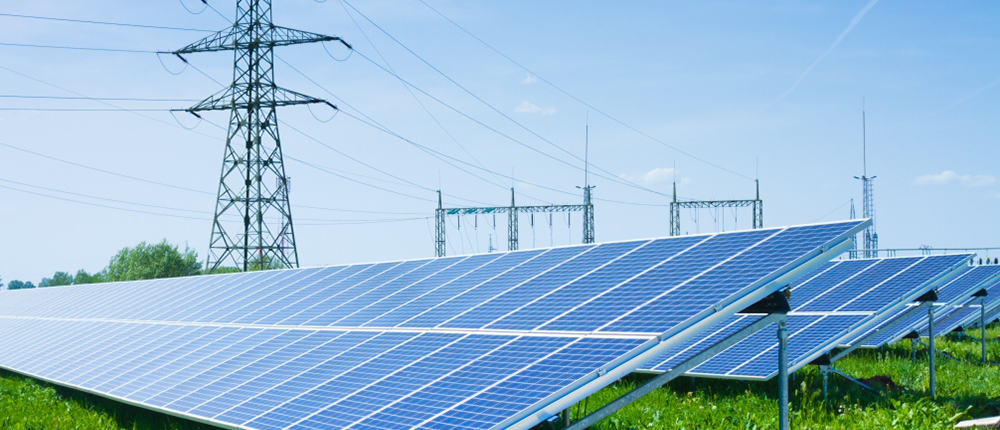
India's Installed Capacity: Present Status and Pledged Contributions
India is the third-largest renewable energy producer in the world with 36 per cent (136 GW) of total installed energy capacity in 2020 generated from renewable sources as per Ernst & Young's 2021 Renewable Energy Country Attractiveness Index (RECAI)—an indicator that ranks the top 40 countries based on investment in renewable energy (Table 1).
Table 1: India's renewable energy-specific RECAI scores and global rank. India achieved a RECAI score of 66.2 in 2021 and was behind the United States (70.7) and China (68.7)
| Technology | RECAI Score (Rank) |
| Solar photovoltaic (PV) | 62.7 (1) |
| Concentrated solar power (CSP) | 9.2 (4) |
| Hydroelectricity | 46.4 (3) |
| Biofuels | 47.4 (10) |
| Onshore wind | 54.2 (6) |
| Offshore wind | 28.6 (29) |
| Geothermal | 23.2 (16) |
For its Nationally Determined Contributions as part of the 2015 Paris Agreement, India made a commitment to produce 40 per cent of its total electricity from non-fossil fuel sources by 2030, subject to assistance for technology transfer and low-cost finance. In 2018, India's Central Electricity Authority set a target of producing 57 per cent of the country's total electricity from non-fossil fuel sources by 2027. India is also on track to meeting its ambitious renewable energy target of 175 GW by 2022 which includes 100 GW of solar, 60 GW of wind, 5 GW of small hydro, 10 GW of biomass power, and 0.168 GW of waste-to-power. At the United Nations Climate Change conference in 2019, India increased its renewable energy target to 450 GW by 2030, with 15 times the solar and twice the wind power capacity compared to April 2016. Clearly, the availability of renewable energy technology for capacity installations is not limiting the country from further expanding its portfolio. Recent national targets have showcased that the Indian Government has a clear intention to reach COP26 as a global leader and tackle climate change at its roots. However, since a regulatory transition is to be expected in almost every carbon-producing industry, an expedited low-carbon transition within the energy space stands at the forefront in the fight against the ever-increasing climate uncertainty.
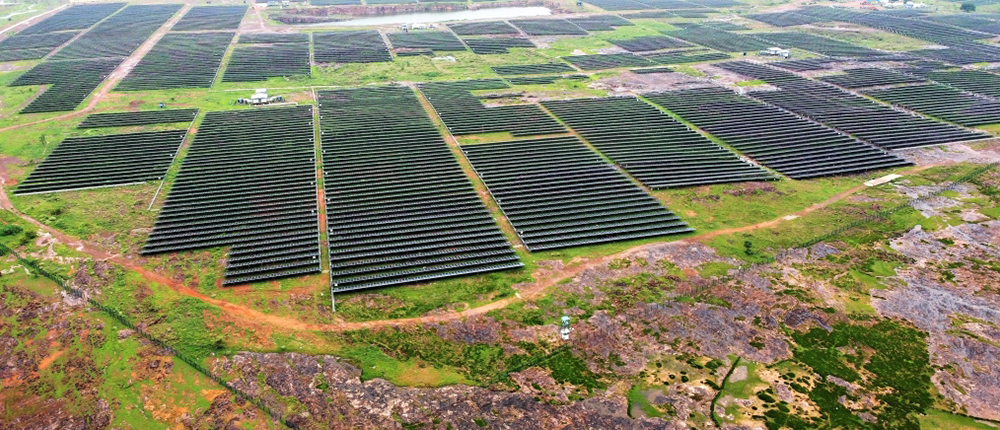
Reeling from COVID-19
Over the last year, despite the adverse effects imposed by the COVID-19 pandemic, India saw a capacity addition of 6.23 GW. The solar industry has surpassed wind as the primary renewable energy source in the country, with an installed capacity of 38.79 GW as of January 2021. Moreover, as bids at renewable energy auctions continue to decrease, renewable energy prices have seen a decline across India. That said, unpredictable climate patterns, especially during the Indian monsoon season in 2020, have contributed to the reduction in annual wind power generation in the last year. The monsoons have highlighted the susceptibility to climate risks in the industry and have even created an investment hazard concerning clean energy. Ironically, the development of renewable energy could be challenged by growing climate risks in the coming decade. The Indian government needs to protect its goals through two actionable initiatives: improving the financial and regulatory flexibility of existing policies that are threatened by the increasing effects of climate change (an example of which is the deviation settlement mechanism in the wind industry), and second, strengthening climate forecasting technology to foresee the drastic change in weather patterns and decrease the administrative burden on the Indian power sector.
The industry's overall resilience must be rooted in India's ambitions to become a global clean energy leader. The strategic and adaptive development of the sector is essential for active and healthy investments in the coming decade. The last few years have witnessed a rise in the number of existing investors pulling out due to the saturated effects of reverse bidding policies. The combination of unregulated development within the generation, transmission, and distribution sectors and increasing climate risks will be detrimental to the growth of the industry.
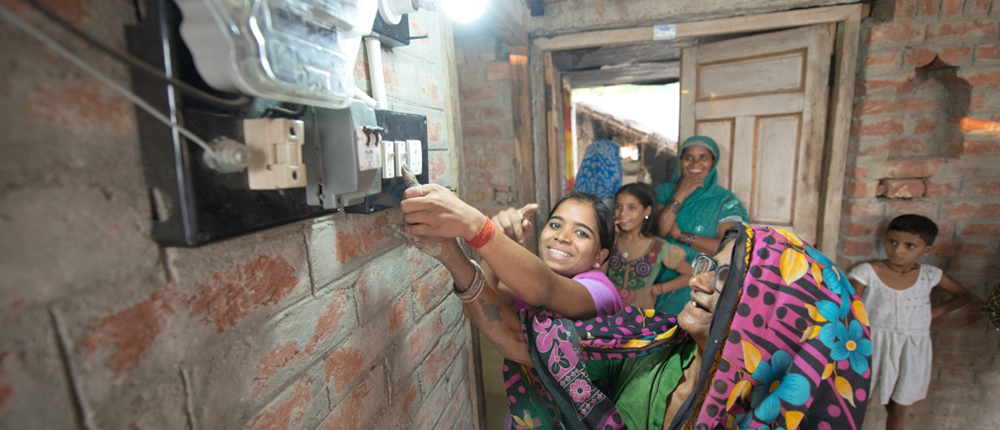
The Way Forward for Effective Integration
Given India's overly optimistic commitments towards sustainable energy, understanding the technological and economic implications of increased penetration of renewable energy is critical. If we fail to do so, we run the risk of making negligible progress towards reducing the share of fossil fuels while consuming considerable financial and human capital—a situation characteristically similar to Germany's Energiewende—a twenty-year-long programme that resulted in the doubling of the cost of electricity for Germany's residents with 78 per cent of the total primary energy demand still being met by fossil fuels in late 2020.
Specifically, the integration of renewables into the national grid is met with three major challenges. First, energy generated from renewables is seasonal—generation depends on several extrinsic factors such as local weather conditions, cloud cover, wind density, etc. Even when the weather is favourable, most of the energy generated from renewables is produced in the afternoon whereas a bulk of the demand is concentrated in the evening and night. A mismatch between supply and demand has troubled electric grid operators and energy service companies for the last decade. This brings us to the second challenge— storage. In order to match supply and demand, the energy generated during the day needs to be stored till the evening when the demand is at its peak. Unfortunately, battery systems and other storage technologies are still very expensive and increase the cost of integrating renewable generators manifold. Although a few organizations around the world have made strides in reducing the per-unit cost of storage, these improvements still sit as lab prototypes in research institutions and are yet to hit the market. Lastly, India's national infrastructure has not been designed to account for so much variability in energy generation. The grid is accustomed to consistent supply from thermal power plants, which is diametrically opposed to the erratic generation from solar-PV, wind turbines, and other renewables. More resilient and responsive infrastructure is required to account for the variability in generation. Otherwise, electric system operators run the risk of frequent power cuts and load surges.
Effectively keeping up with India's targets and commitments will require focused solutions addressing these three challenges. It is imperative that these challenges not only be met via technological innovation but must involve financial and business model innovation too by leveraging concessional financing, promoting subsidies for renewables, and forming stakeholder consortiums. At present, funding for technology development and deployment is ubiquitous, although, to avoid a dot-com era boom and bust, funders should focus on bringing proven technologies to the market while also promoting investment into systems-level thinking. It has been the central government's prerogative to develop stimulating policies and mechanisms such as generation-based incentives, viability gap funding, and import relaxations for new capacity installations. To rapidly scale the deployment of even more technology, the private sector may need to pool ‘big-ticket' consortiums and funders that are willing to champion high upfront capital investments. Even more necessary is stakeholder cooperation built into the business models of electric utilities and energy service companies.
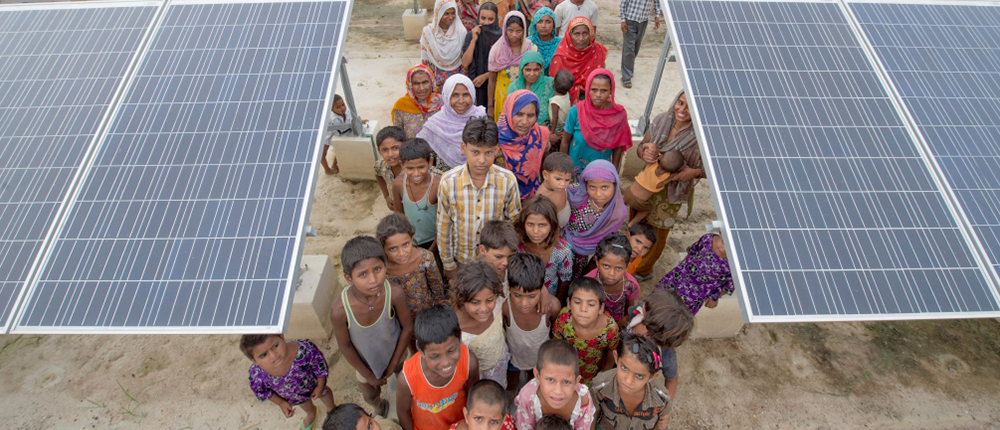
Integrated Electrification and Cooperation among Stakeholders
Stakeholder cooperation becomes even more necessary as energy access efforts ramp down. In 2010, India had close to 300 million people lacking access to reliable electricity—close to a fourth of its population. By the end of 2020, this number had reduced by an order of magnitude to 30 million. This transformation was championed by a slew of stakeholders— from central and state governments to philanthropic foundations and even private energy service companies. Now, the government is battling another problem that has resulted from an impetus towards merely connecting households and businesses in rural communities to the grid—a lack of electricity reliability. Distribution companies (DISCOMs) in rural and remote communities have been struggling with covering operational expenses and find themselves in need of government-supported financial bailouts ever so frequently. The main cause for this problem is the lack of customer demand, which is driven by the perception of unreliable supply and abominable billing, metering, and collection. Together, this issue—the lack of customer demand due to unreliable supply, and unreliable supply due to the lack of customer demand—forms the basis of a vicious cycle that needs to be broken immediately. Privatization of DISCOMs and the advent of off-grid and integrated systems is one such solution that may help circumvent the problem.
Adopting a systems-level approach to renewable energy integration has been unanimously identified as a key determinant of success by many policymakers, foundations, research groups, and think tanks. States with large distributed renewable energy (DRE) markets (Bihar, Jharkhand, and Uttar Pradesh) are also the ones with the largest electricity access barriers. In places where the electricity supplied by the national grid is too unreliable or unavailable, mini-grid developers have been quick to deploy decentralized solutions. These energy service companies primarily install solar-powered mini-grids of the order of 10–30 kW that in turn power small enterprises, markets, water purifiers, and even electric irrigation pumps. The major challenge these organizations face is a lack of systems-level thinking and planning. Presently, private energy service companies have been at odds with DISCOMs supplying electricity to the national grid—their mini-grids are very widely accepted and used until the DISCOM extends its infrastructure and reaches a village. Instead of this widely accepted system of uncoordinated efforts, all stakeholders—DISCOMs, private providers, and even communities—will benefit from the adoption of a least-cost approach to electrification planning. Within this framework, an optimal configuration of grid extension and decentralized systems is determined based on the cost of infrastructure and the provision of electricity service. Not only does this achieve electrification with optimized financial planning, but it also promotes a sense of security among private companies by ensuring that their services will not be undercut by a low-cost albeit unreliable extension of the national grid.
Two Futures
India is on the cusp of an energy revolution. There are two distinct futures for the country— one where the share of renewable energy plateaus out due to insufficient systems-level thinking and investment in research and development. The other case—where utilities and private companies work in tandem, where the government leverages innovative financing, and where a systems-level integration approach dominates the market—is far more favourable. Merely increasing renewable energy targets and installing new capacity is simply not enough. Economically maintaining a balance of supply and demand and designing technically reliable grids while adopting an overarching systems-level approach are the need of the hour. For India to adopt the second future—a more favourable outlook for the country and the world—major perception changes are required. Governments must be open to leveraging innovative financing vehicles more, DISCOMs and private companies must work in tandem, technology providers must continue to invest in technology and innovation, and cooperation must be the prerogative for every stakeholder.#
Dhruv Suri, School of Earth, Energy and Environmental Sciences, Stanford University, United States; Jai Shekhar, Department of Chemical Engineering, Manipal Institute of Technology, India; Azade Y Aria, REpurpose Global, India.
This article was first published in the online magazine TerraGreen.

